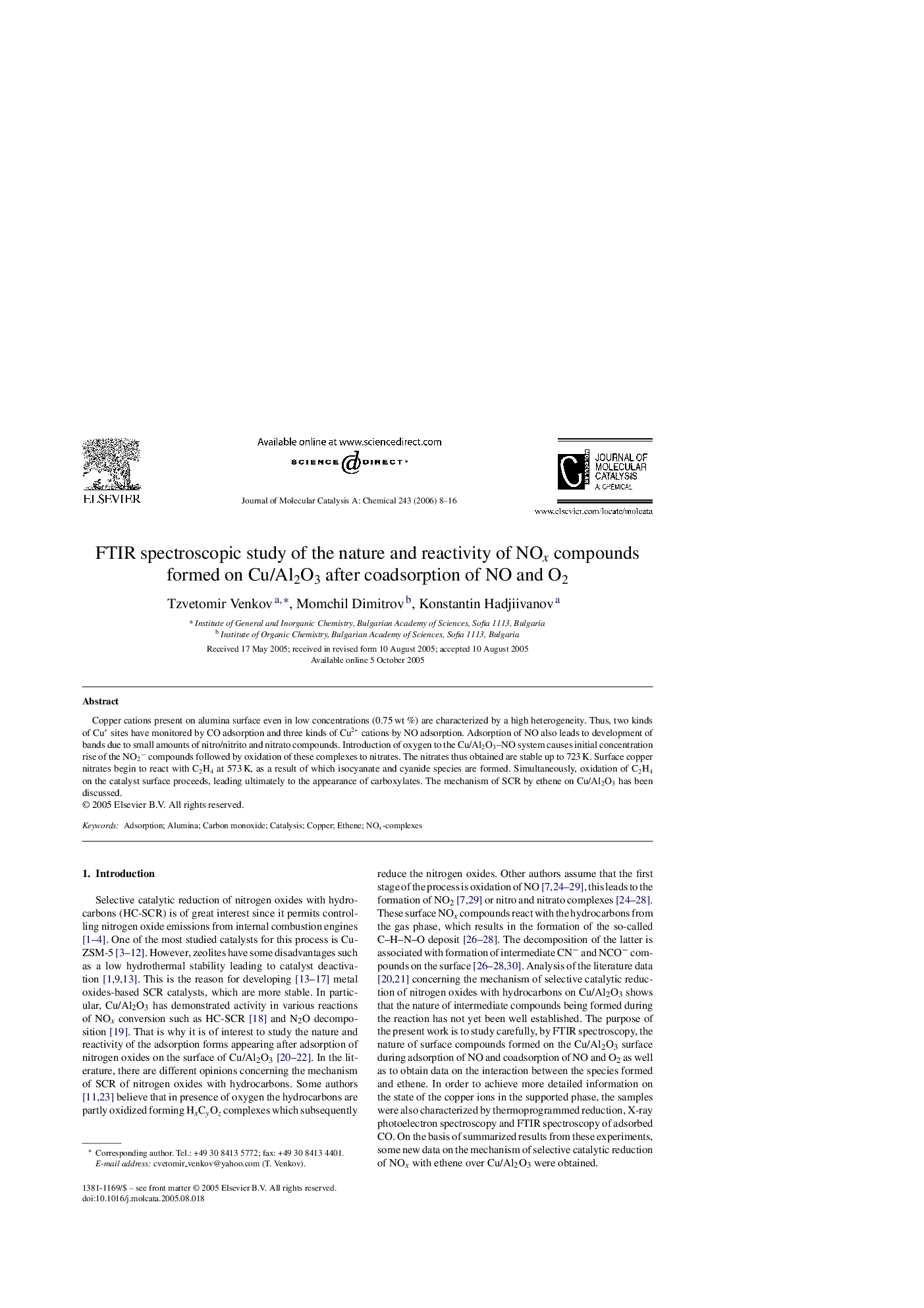| Article ID | Journal | Published Year | Pages | File Type |
|---|---|---|---|---|
| 69210 | Journal of Molecular Catalysis A: Chemical | 2006 | 9 Pages |
Copper cations present on alumina surface even in low concentrations (0.75 wt %) are characterized by a high heterogeneity. Thus, two kinds of Cu+ sites have monitored by CO adsorption and three kinds of Cu2+ cations by NO adsorption. Adsorption of NO also leads to development of bands due to small amounts of nitro/nitrito and nitrato compounds. Introduction of oxygen to the Cu/Al2O3–NO system causes initial concentration rise of the NO2− compounds followed by oxidation of these complexes to nitrates. The nitrates thus obtained are stable up to 723 K. Surface copper nitrates begin to react with C2H4 at 573 K, as a result of which isocyanate and cyanide species are formed. Simultaneously, oxidation of C2H4 on the catalyst surface proceeds, leading ultimately to the appearance of carboxylates. The mechanism of SCR by ethene on Cu/Al2O3 has been discussed.
Graphical abstractFigure optionsDownload full-size imageDownload as PowerPoint slide
